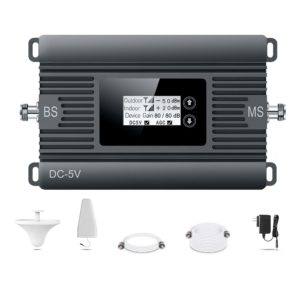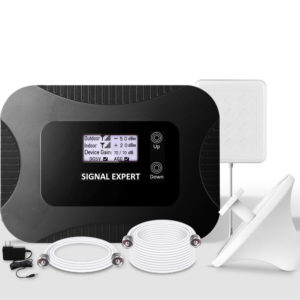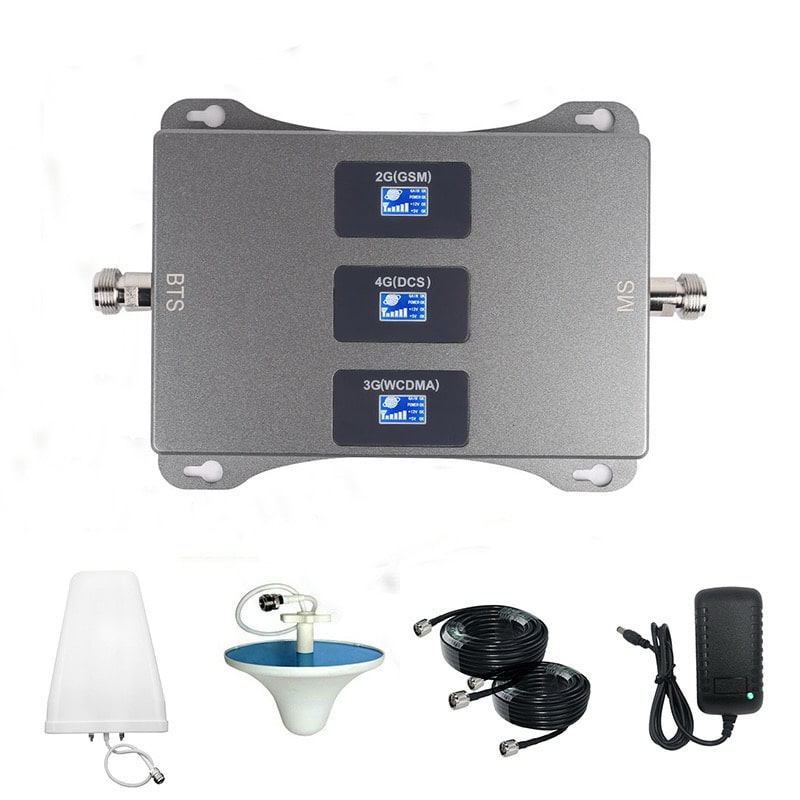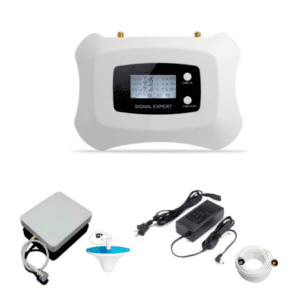How to Boost Mobile Signals in Australia
The latest technological advancements have brought us from using 1G as a network to 5G. The rollout of 5G in Australia started in the year 2019. 5G is geared to boost mobile signals around 10X. Though, the rollout of 5G is under process but is not fully functional. This means that the people living in Australia still depend on 3G and 4G services for fulfilling their mobile network needs. Every network upgrade has brought us faster internet speed, enhanced features, and better connectivity.
Australia has witnessed the network connection upgrade from the first generation to the fifth generation of networks. The major network providers are Telstr, Optus, and Vodafone. The network operators have competed to establish a monopoly over the networking services. Vodafone has faced some problems while creating an identity amongst Aussies. Let’s dig a little deeper and understand how the networks have strengthened in Australia.
Network Progression
Australia’s first automatic mobile system had three radio base stations. Telecom launched it, covering Melbourne in August 1981. The same year followed the launch of five radio base stations in Sydney and Brisbane. The MTS system was costly, as the annual network was around $800. It covered 80 base stations with 14,000 subscribers. In 1987, they introduced the AMPS Network, which was Australia’s first cellular network. It led to a decrease in the usage of the MTS Network and later it was shutdown.
1G – The Revolution Began
Around 1985, Telecom started creating a more advanced mobile phone. They signed a contract with Ericsson Australia for supplying the network equipment for AMPS. The first call was made through a Mitsubishi handheld device. This was how the first generation of the network launched in Sydney with 14 base stations. 1G was created to support the re-use of frequencies and hand-off calls between phones and boost mobile signals. In May 1987, they rolled the AMPS Network out in Melbourne and the capital cities covering 85% of the total population.
2G – The Cultural Evolution
The telecommunication industry introduced the 2G GSM Network in 1991. They did this to bring in more competition among mobile phones. GSM was used in all parts of Europe as it could provide international roaming for two operators. The band spectrum designated for 2G was 900MHz, which was further divided between the three operators for 2×8.3 MHz for each operator. This technology worked in the long run, as it was used widely in different parts of the world. With this, Telstr became the first network operator to use the GSM network outside Europe.
3G – Everything improved
In January 2003, Telstr added 1XRTT data capability to the CDMA network in Sydney and Melbourne, which later expanded to Brisbane and Canberra. The company called this technology the 3G Network when Hutchison launched the WCDMA Network in March. 3G services help boost mobile signals for mobile users. Optus launched the 3G Network, opting to share data with Vodafone. In 2007, Optus upgraded to HSDPA 3.6 Mb per second, while Vodafone was struggling to establish itself.
4G – The Streaming age
In September 2011, Telstr launched the 4G network to reduce the increasing traffic on 3G. They targeted to cover 66% of Australia’s population by mid-2013. Optus launched the 4G LTE spectrum with a frequency of 1800 MHz, in Sydney, Brisbane, Coffs Harbour, Byron Bay, and Perth. Vodafone’s 4G launch came after losing 1.5 million subscribers in 2010 due to network issues and poor performance. It is focusing on major metropolitan areas to re-establish itself.
5G – Age of AI and IoT
The roll-out of 5G began in early 2019. It is not an improvisation of the previous networks, but a new advancement with better features. Telstr has released devices like Samsung Galaxy S20 and the Samsung Galaxy Note S10+. Optus has launched a 5G home broadband service, costing $70 per month. Vodafone at present has three devices for availing the 5G network i.e. Samsung Galaxy S20 family. The 5G services of Optus and Telstr are still being rolled out, while Vodafone is facing problems for creating a network existence.
Are you facing network issues?
There are several instances where we face a network issue or poor connectivity. You may be using 3G, or, 4G, services of the three leading network operators, but there are chances that you will face weak signals. To identify a connection problem, observe if your calls keep dropping or voice breaks in between the calls. Take notes if your film takes too long than usual to download or the videos keep buffering. When you face network issues, you will come across such situations.
There are a few hacks you can try out to boost mobile signals and solve the issue. You can update your phone to the latest software, remove designer phone covers, ensure the phone works properly, or switch off LTE. These methods are a temporary solution for your network problem. If you want a permanent solution that helps boost mobile signals for your home/office, you will need a quality mobile signal booster.
Boosting Mobile Signals for Optus
Optus is one of the three major network providers in Australia. It provides 3G, 4G, and 5G network services with attractive data plans and benefits. Optus has provided data services since 1992, generating almost $6 billion in revenue. It covers one-third of the total Australian telecommunication market.
Evolution started with introducing the 1G network, bearing analogue voice calls. The AMPS network created a base foundation for the coming networks. In 2000, the 2G network came with enhanced capabilities providing SMS and texting services. During the Sydney Olympic, the GSM network successfully connected all the calls. With the introduction of the 3G network, Optus marked an end to the GSM era.
The 3G network gave a great effort to boost mobile signals and was efficient to work simultaneously with Android and IOS. This network lays the groundwork for the name ‘Mobile Broadband’, providing speed and reliability which could be an alternative to WiFi or ethernet. The fourth-generation of the network improved the performance and overall efficiency of the network, supporting HD and higher resolutions. It has allowed people to play games in high-graphics and the best audio quality.
The 5G network is a game-changer but is still under roll-out in various parts of Australia. It will be the fastest network ever experienced. It brings faster data transfer, quick downloads, video streaming, upload speeds, HD video calls, extreme gaming graphics, and much more. Optus has brought in 5G services as a home broadband service, providing users with unlimited data.
If you are facing issues with internet connectivity with Optus, we might have just the right solution for you. We have a range of Optus mobile signal boosters which will help you solve the network problem. You can select a 3G cell booster, 4G booster, or a 5G signal booster, depending on the network you use for data services.
Boosting network for Telstr
Telecom was a government-owned entity. Telstr grew out of the parent company of Telecom. It is one of the most preferred networks by the Aussies. It offers a network to several Mobile Network Virtual Operators. But, it offers its premium services as the network head with added benefits like accessing the Telstr Air International WiFi network. Streaming sports and music free through Apple music.
The company started providing GSM network services in Australia on 27 April 1993. It was the first company to launch the 2G network, after analogue, in different parts of the country. The company shares that making the Aussies understand and adapt to the new technology was an arduous task.
With technology advancing every day, the company came across 3G and 4G. The third generation saw more efficiency and reliability. Both the networks together reached around 99.4% of the total population of Australia. The Telstr network services cover an area of 2.5 million square kilometers, also covering the rural and regional areas, which haven’t been covered by any other carrier yet. In 2019, Telstr planned the roll-out of the fifth generation of the network. This network is one step ahead when compared to all the previous networks. It is faster and better with low latency and connecting IoT devices worldwide. Today, the company has over 9,200 sites across Australia’s network.
If you are facing network issues with Telstr, you can opt for a cell booster from the premium range of Cell Phone Signal Boosters. You can go for a 3G, 4G, or 5G mobile signal booster which fits best for your purpose.
Boosting Network for Vodafone
If we look at the global scale, Vodafone is a leading company. But it has faced some issues establishing itself in Australia, probably because Telstr is the oldest company here. The network is Co-owned and merged between Vodafone and three Hutchison companies. It sells networks to a few MVNOs granting 4G access.
In 1983, Vodafone started with a dream to establish its network services in different parts of Australia. It was the last to get permission for launching the GSM network. Optus and Telstr had already launched their 2G services by then. Three Hutchison operators launched the 3G network and later merged with Vodafone. It offers network services in the cosmopolitan cities and large regional centers, still struggling to work full-fledged in rural areas.
Vodafone launched the 4G and LTE services when the traffic built on 3G was increasing to a large extent. The 4G network provided various benefits like better video/audio quality, faster download/upload speed, no video buffers or call drops. The fifth-generation was introduced by working on a fierce interface that supported additional features with the existing LTE technologies. Vodafone is focused on building and establishing its brand by providing the fastest 5G services across Australia.
Since Vodafone doesn’t have an established presence in all states/towns, you may face signal issues with the operator. Your best choice is investing in a good quality Vodafone signal booster. Cell booster Australia provides you with several products including 3G cell signal booster, 4G signal booster, and 5G signal booster, especially for Vodafone users.
|
Network carrier |
3G | 4G |
5G |
| Telstr | 850 MHz
2100 MHz |
700 MHz
900 MHz 1800 MHz 2100 MHz 2600 MHz |
3.5 GHz |
| Optus | 900 MHz
2100 Mhz |
700 MHz1800 MHz
2100 MHz 2300 MHz 2600 MHz |
N/A |
| Vodafone | 900 MHz/2100 MHz | 850 MHz
1800 Mhz 2100 MHz |
N/A |
Summary
With Cell Boosters Australia, you can select the best cell booster. To help you narrow down the choice, go through the details – your network carrier; 3G, 4G, 5G services, and the frequency. You can get a cell booster for your home, office, farms, and hotels. Get a portable mobile booster for your car to get the best signal while traveling. So, what are you waiting for? Get your cell booster now!






